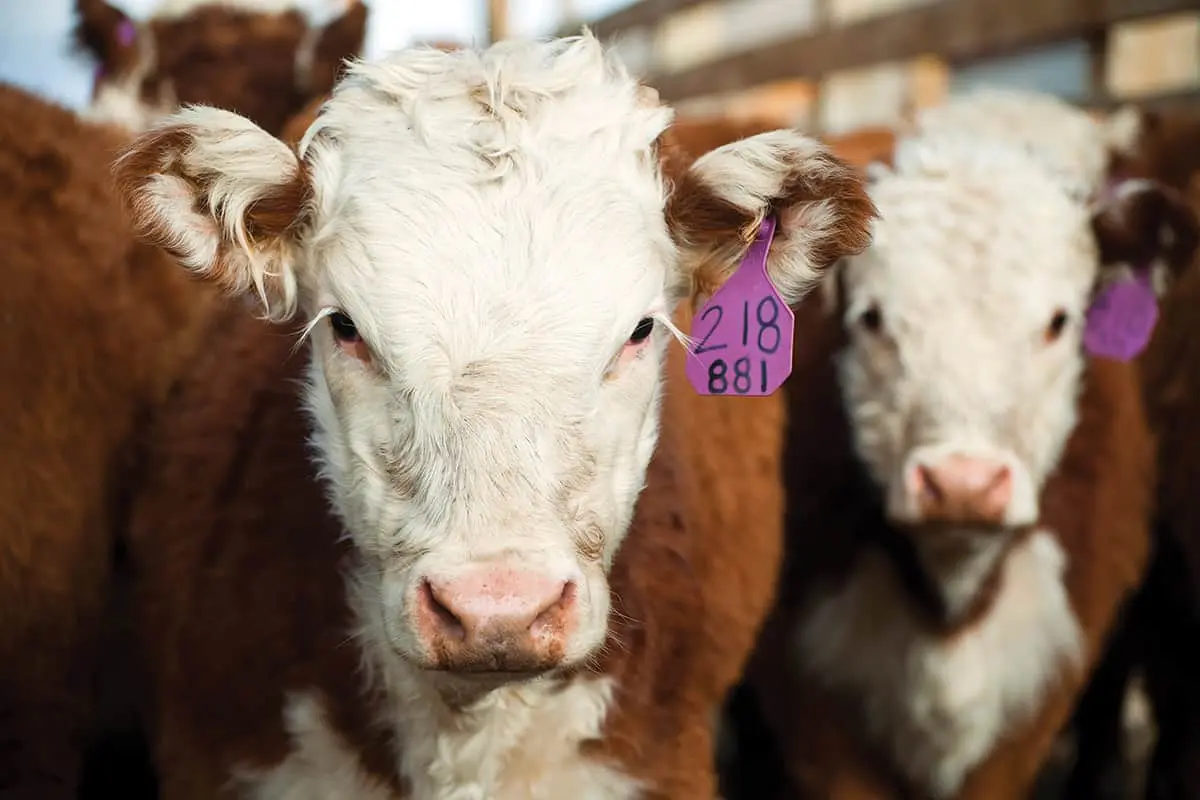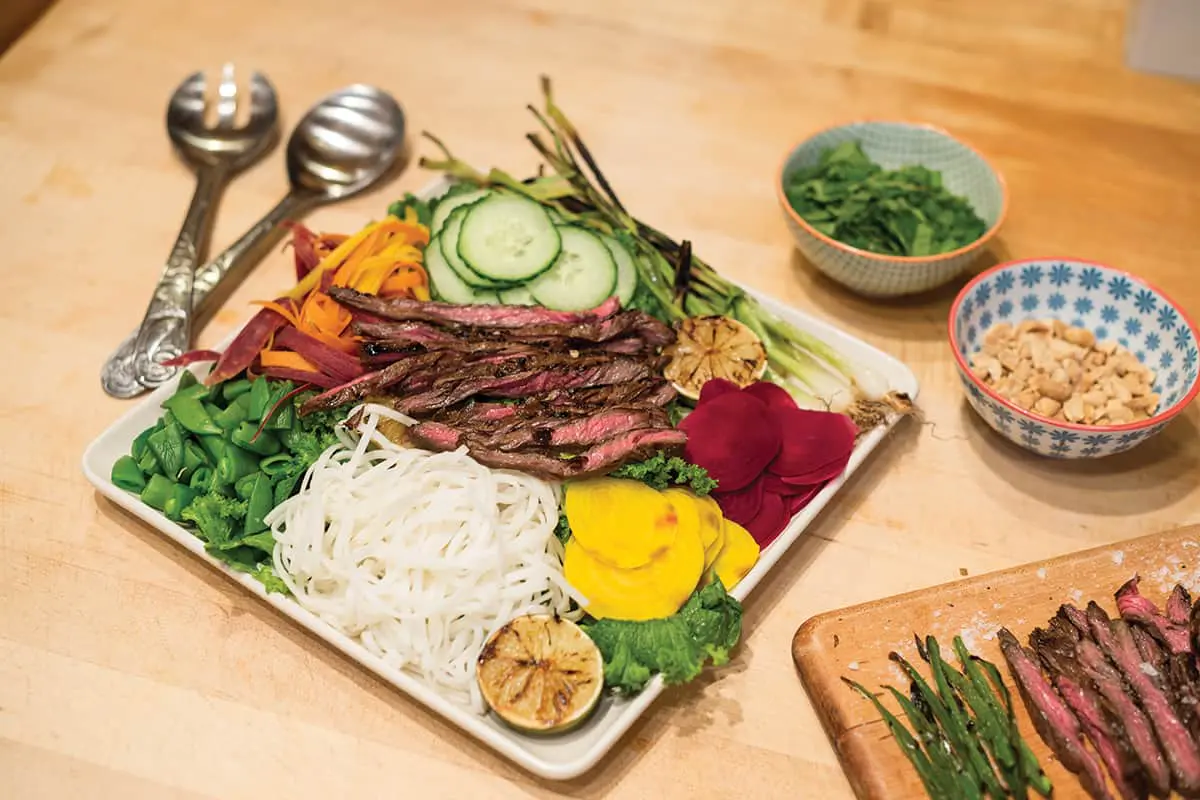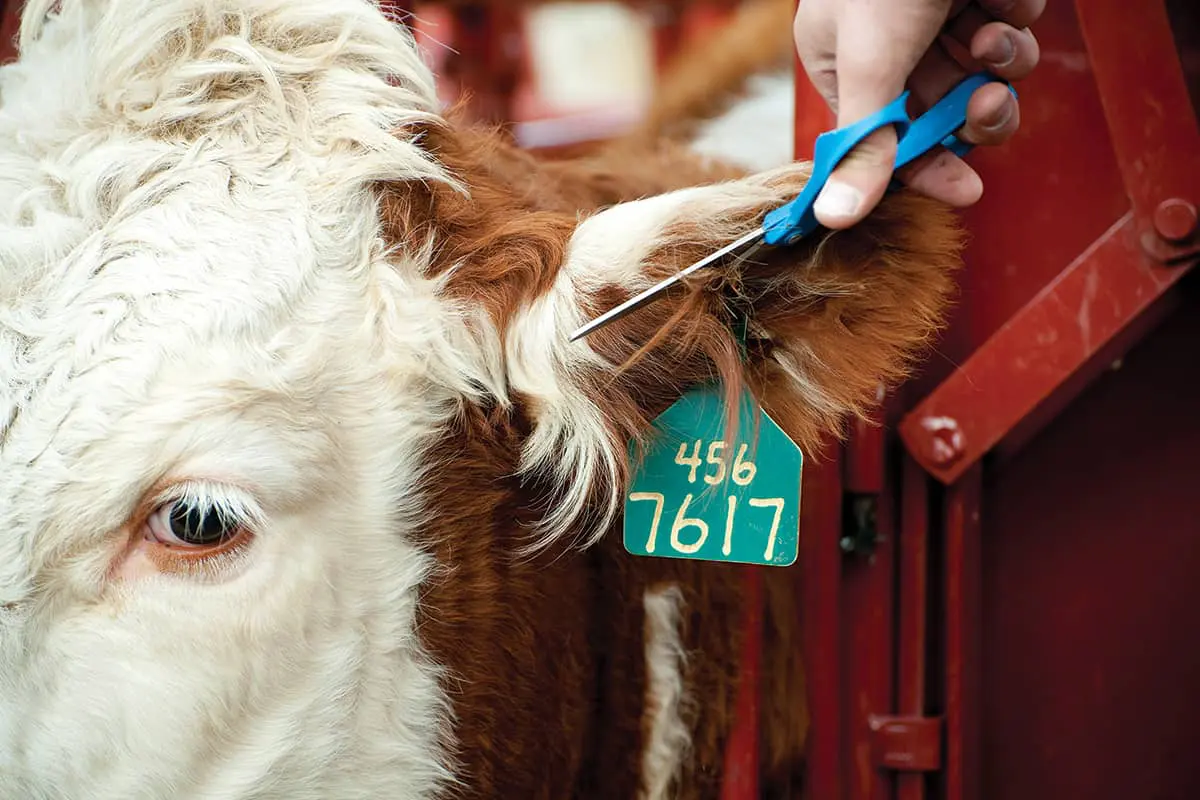By Annie Fenn // Photographs by Price Chambers
–
There you are, standing in front of the butcher counter at the grocery store looking to buy some meat. If you are a typical American meat eater, “cheap, fast, easy” is your mantra. Grab the bargain-priced cut and off you go to throw it on the grill. Done.
But perhaps buying meat is not that simple for you … let’s call it the “Carnivore’s Dilemma.” On one hand, you want to feed your family meat that’s healthful and delicious. On the other, you don’t want to spend a fortune on dinner. If you’re a conscientious carnivore, choosing which meat to eat can be complicated.
Is eating meat healthy?
Some experts blame the sad state of the nation’s health on our insatiable hunger for animal products. They say our obsession with getting enough protein—Americans eat roughly twice the Recommended Dietary Allowance (RDA) of protein, most of it from animals—is making us fat, giving us heart attacks, strokes, type 2 diabetes, and leading us down a path to early dementia.
One could argue, however, that meat is a nutrient-dense, healthful food that humans have evolved to eat. Millions of Paleos (those following the Paleolithic diet and lifestyle) will tell you, with great enthusiasm, how they’ve lost weight, gained muscle, and improved their lipid profiles by eating a diet void of processed carbs that includes a lot of meat. And there’s scientific data to back them up.
Conversely, Dr. Dean Ornish makes the case that meat eating is not just unhealthy; it’s also associated with premature death from all causes. Ornish of the Preventive Medicine Research Institute has been studying the benefits of a plant-based diet, with little or no red meat. He points to substances in red meat that cause inflammation, tumor growth, and clogging of the arteries.
“The beef are what they eat. Just like us. In Jackson we are all so lucky to have an awesome quality of life, access to good food, and open space to thrive in. Animals deserve the same.”
– Chase Lockhart, Lockhart Cattle Company
Is eating meat ethical?
Paleos aside, most nutritional experts recommend that we cut back on the amount of meat we eat. It’s not just our health that’s at stake; the nation’s carnivorousness is creating problems for the planet and a poor quality of life for the animals we eat.
If we take a look at where most of our meat comes from, the answer isn’t pretty. Ninety-nine percent of the beef, pork, and poultry Americans eat comes from factory farms called Concentrated Animal Feeding Operations, or CAFOs. You’ve probably already learned that these CAFOs are not planet-friendly, that factory-farmed meat causes all sorts of problems with our health, and that this culture of confinement is a cruel way to raise animals for food.
Some say that eating a hamburger is the climate-change equivalent of driving a Hummer. It is estimated that livestock produces one-fifth of the world’s greenhouse gases—more than all transportation emissions combined. Thirty percent of the earth’s ice-free land is used to grow grain for feed and to raise livestock. Around the world, carbon is released into the atmosphere as forests are cleared to make room for animal agriculture. And fuel is burned to operate machinery, move animals from ranches to CAFOs, and transport meat to your supermarket.
Just what’s in it?
Michael Pollan, author of The Omnivore’s Dilemma, famously wrote, “You are what you eat eats.”
Most livestock in America is started on grass, then sent to CAFOs and fed grain—mostly corn—to fatten the animals up before slaughter. Cattle and pigs gobble up corn like candy, and it efficiently packs on pounds. If they were human, we’d say they were obese.
Now a little bit of grain is not so bad, but meat from heavily corn-fed livestock has the worst nutritional profile of all. It’s high in all the harmful fats—trans fats, saturated fats, and inflammatory-inducing omega-6 fatty acids.
Not only are these industrialized farms flooding our food supply with unhealthful meat, they’ve also become breeding grounds for a new generation of virulent bacteria. Emerging from the guts of animals given subtherapeutic doses of antibiotics, these bugs make it difficult for physicians to treat foodborne illnesses.
“We’re softhearted about our cows.
Some of these moms descended from Brad’s
great-great-granddad’s herd.”
– Kate Mead, Mead Ranch Natural Beef
Going local
Back at the supermarket … are you still peering into that meat case deliberating over what to buy? You can swear off meat altogether, or you can be a part of the 1 percent of Americans who won’t buy factory-farmed meat at all.
Seek out local animals that are raised on traditional farms. Luckily, most family run ranches and farms in Wyoming and Idaho raise livestock the old-fashioned way by allowing cattle and sheep to graze on grass, drink pristine water, and have plenty of room to act like animals.
Local meats can be sourced directly from ranchers and farmers—just give them a call and tell them what you want. Or ask an independent butcher like Teton Valley’s Derek Ellis at Ellis Custom Meats. He’ll tap into his contacts to fill your freezer with beef, pork, bison, and lamb. He’ll even butcher your own wild game. As a bonus, you’ll get to choose how the meat is processed—just be sure to have some of it turned into Ellis’ famous Merguez sausage.
Get to know a butcher who is committed to whole animal butchery, like Andrew Smith (a.k.a. Smitty) at Aspens Market. Smitty and fellow butcher Derek Castro source whole animals from local farms, but won’t let a scrap go to waste. They transform the heart and liver into luscious pâté, the head into headcheese, and the bones into from-scratch soups. They do this in part out of their sense of responsibility to the source of the meat. “I feel like it’s our job to figure out how to support the farmers and the ranchers,” Smitty says. And that can’t be done by cherry-picking only the most popular cuts.
Most of our local ranchers don’t just raise cattle; they are stewards of the land and advocates for animal welfare and healthy meat. “We have really gentle cowboys,” says Kate Mead of Mead Ranch Natural Beef, which she runs with her husband, Brad. “We’re softhearted about our cows. Some of these moms descended from Brad’s great-great-granddad’s herd.”
The Mead family runs a cow-calf operation in Jackson Hole on the same land their late-1800s ancestors ranched. To reduce environmental impact, their cattle graze on natural hay and clover, aerating the soil with their cloven hoofs. The manure is carefully managed by raking it back into the soil, creating a carbon sink rather than problematic emissions. The Meads’ cattle are 90 percent grass-fed, are never fed corn, and the small amount of grain that supplements their diet comes from a local source—spent grain from Snake River Brewery.
At Lockhart Cattle Company, the animals live their whole lives grazing on grass in Jackson Hole. The company’s grass-fed beef is lean and deeply flavored, which rancher Chase Lockhart attributes to lush forage and a low-stress environment. All that grass, packed with nutrition, incorporates itself into the meat. “The beef are what they eat. Just like us,” Lockhart says. “In Jackson we are all so lucky to have an awesome quality of life, access to good food, and open space to thrive in. Animals deserve the same.”
Both the Lockharts and the Meads strive to reduce their carbon footprint further by selling their beef locally at farmers markets, local grocery stores, and area restaurants.
Remember when the food movement was in its infancy and luminaries like writer Pollan and educator Marion Nestle urged us to “vote with our forks”? Now, more than ever, that advice rings true. Support this new movement of sustainable agriculture, of eating less but better meat, and of treating animals humanely. Let’s vote with our forks—and our knives.
Thai grass-fed
steak salad
—
Makes 4 servings
—
This is how I like to eat meat—in small portions on top of a huge pile of fresh vegetables. Try this recipe with wild game steaks, too.
Marinate the following for at least 6 hours and up to 2 days:
1 pound of steak
1/4 cup soy sauce
1/4 cup rice wine
1/4 cup fresh lime juice
2 tablespoons vegetable oil
2 tablespoons brown sugar
4-5 Kaffir lime leaves (optional)
Thai Dressing:
4 tablespoons fish sauce
4 tablespoons fresh lime juice
2 tablespoons brown sugar
6 tablespoons water
1 clove garlic, minced
2-4 drops Sriracha hot sauce
Place all ingredients in a jar and shake until incorporated.
Salad:
4 cups mixed greens and shredded kale
1 cup sugar snap peas, cut into thirds
3 carrots, sliced into strips
2 beets, thinly sliced
1 cucumber, thinly sliced
1 cup torn basil
1 cup shredded mint
1 jalapeno, seeded and finely diced
1 cup cooked quinoa or rice noodles (optional)
1/2 cup salted peanuts, coarsely chopped
Sriracha hot sauce
Limes
1. Remove the steak from marinade and dry well with paper towels.
2. Sear over a hot grill 2 to 3 minutes each side or until cooked rare or medium-rare. Set it aside to rest.
3. Toss the salad by hand with half of the Thai dressing and quinoa or noodles, if using. (The extra dressing keeps well for up to 1 week in the fridge.) Divide on plates.
4. Slice the steak as thinly as possible, against the grain, and drape over the top of the salad.
5. Top with peanuts, a dab of Sriracha hot sauce, and serve with lime wedges.
responsible meat eating: a guide
Read Labels. Look at labels for reliable indicators of high standards: USDA Organic, Animal Welfare Approved (AWA), American Grassfed, and Certified Humane. Natural beef is raised without antibiotics or hormones. Don’t get hung up on “organic.” Your local rancher may be raising animals organically, even though they can’t afford the official USDA stamp.
Buy Local. Get to know your local butcher. Buy meat in pieces or in bulk from ranchers and farmers. Purchase a CSA meat share. Visit Slow Food in the Tetons’ website—tetonslowfood.org—for regional sources.
Cook More. Cooking food at home gives you control over its source.
Ask a Chef. Support restaurants that proudly serve local and regional meats.
Expect to Pay More. Humanely raised, healthful, planet-friendly food costs more, and it should.
Eat Less Meat. Avoid processed meat. Reduce portion sizes to three to four ounces. Choose fresh, unprocessed meats without nitrates.
Learn More. Learn about Slow Food USA’s Slow Meat campaign. Attend the SHIFT sustainability summit each fall. Read The Carnivore’s Manifesto by Patrick Martins, Defending Beef by Nicolette Hahn Niman, and Mark Bittman’s book about the benefits of being a part-time vegan, VB6: Eat Vegan Before 6:00.
Clean Your Plate. Precious resources are required to raise livestock and get it to your plate. Don’t add to the 40 percent of food in America that ends up in the trash.
Hunt. When it comes to sourcing meat, what could be more organic, natural, environmentally friendly, and, in most cases, humane, than harvesting your own meat?




